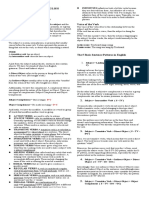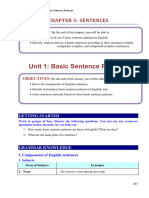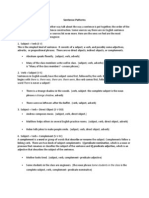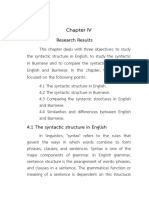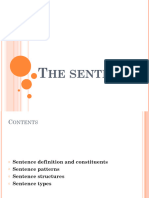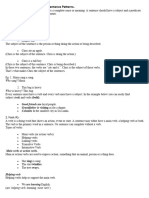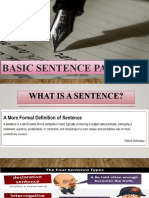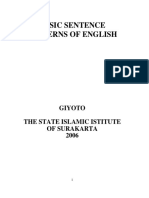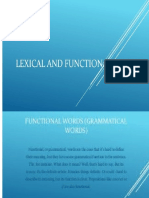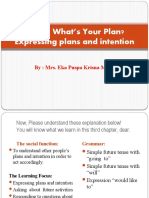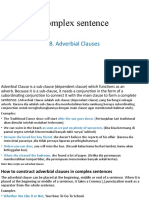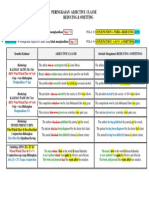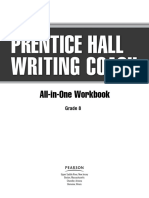0% found this document useful (0 votes)
156 views34 pagesSentence Pattern Technical Writing
The document explains sentence patterns, which consist of phrases and clauses, detailing the difference between phrases (incomplete sentences) and clauses (complete thoughts). It outlines five basic sentence patterns in English, including Subject + Linking Verb + Complement and Subject + Transitive Verb + Direct Object, among others. Additionally, it covers the basic elements of a sentence, such as subject, predicate, objects, complements, and modifiers.
Uploaded by
dennyzbacongCopyright
© © All Rights Reserved
We take content rights seriously. If you suspect this is your content, claim it here.
Available Formats
Download as DOCX, PDF, TXT or read online on Scribd
0% found this document useful (0 votes)
156 views34 pagesSentence Pattern Technical Writing
The document explains sentence patterns, which consist of phrases and clauses, detailing the difference between phrases (incomplete sentences) and clauses (complete thoughts). It outlines five basic sentence patterns in English, including Subject + Linking Verb + Complement and Subject + Transitive Verb + Direct Object, among others. Additionally, it covers the basic elements of a sentence, such as subject, predicate, objects, complements, and modifiers.
Uploaded by
dennyzbacongCopyright
© © All Rights Reserved
We take content rights seriously. If you suspect this is your content, claim it here.
Available Formats
Download as DOCX, PDF, TXT or read online on Scribd
/ 34




